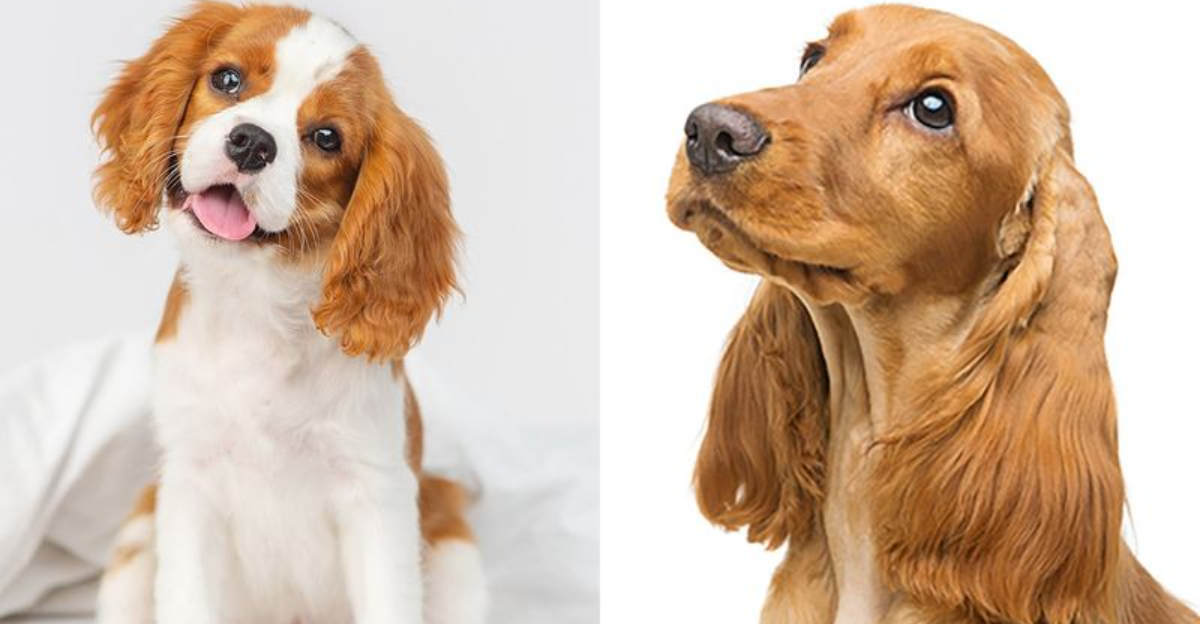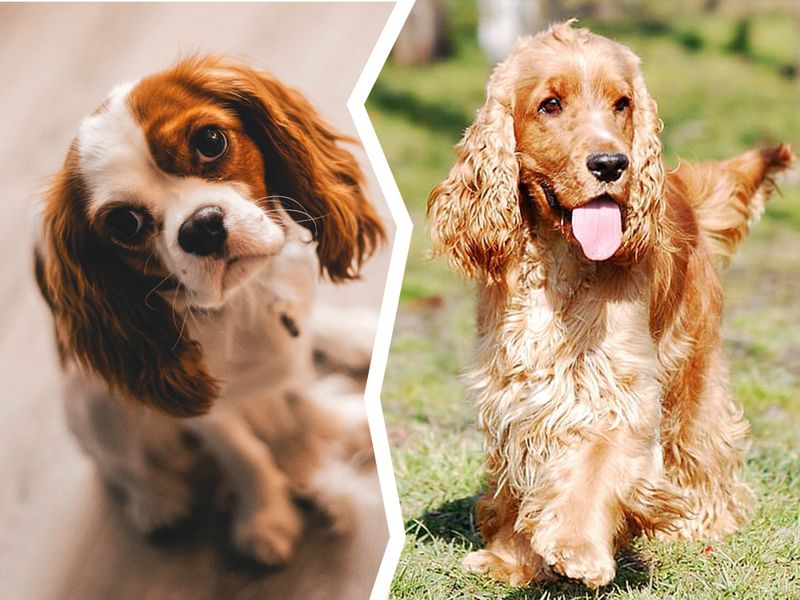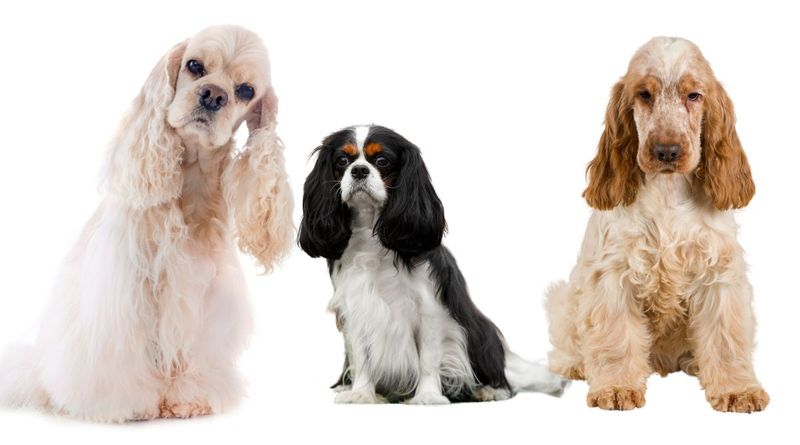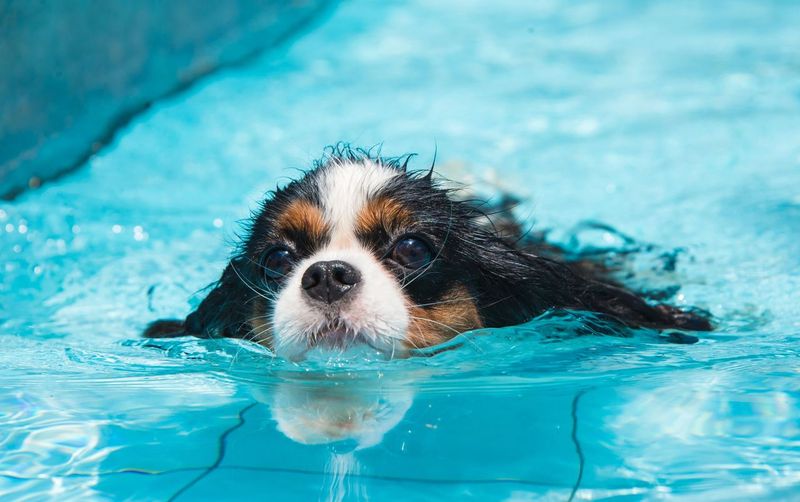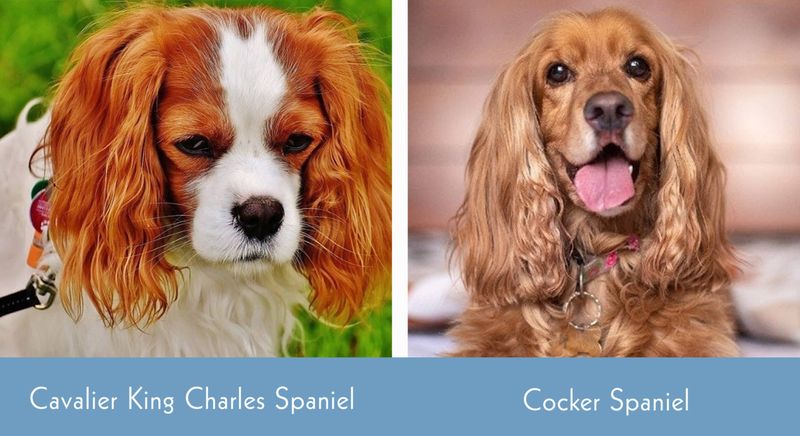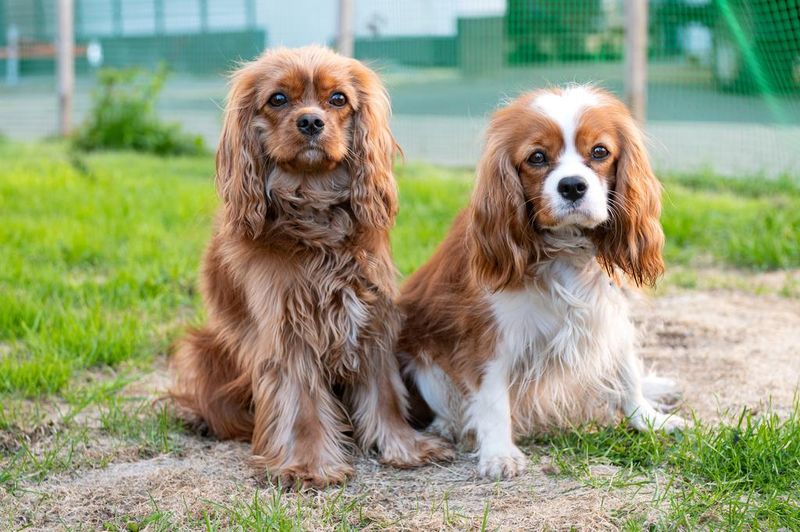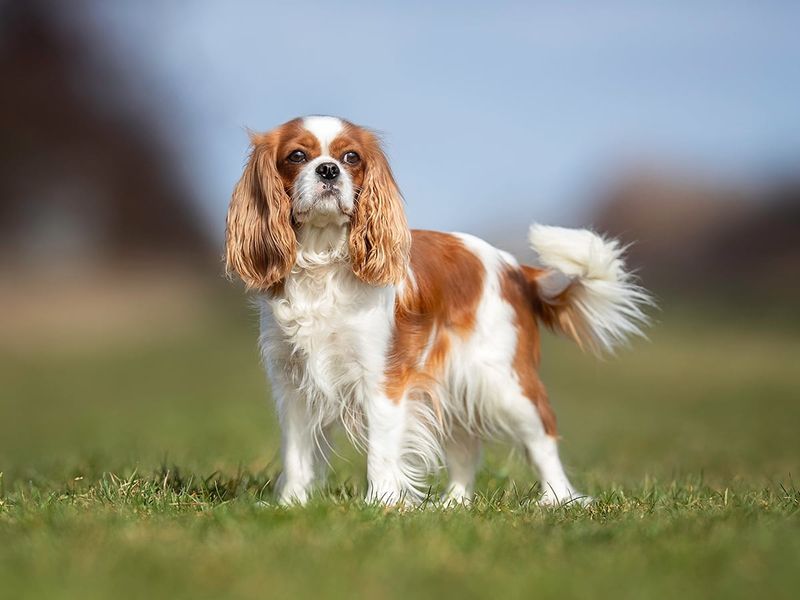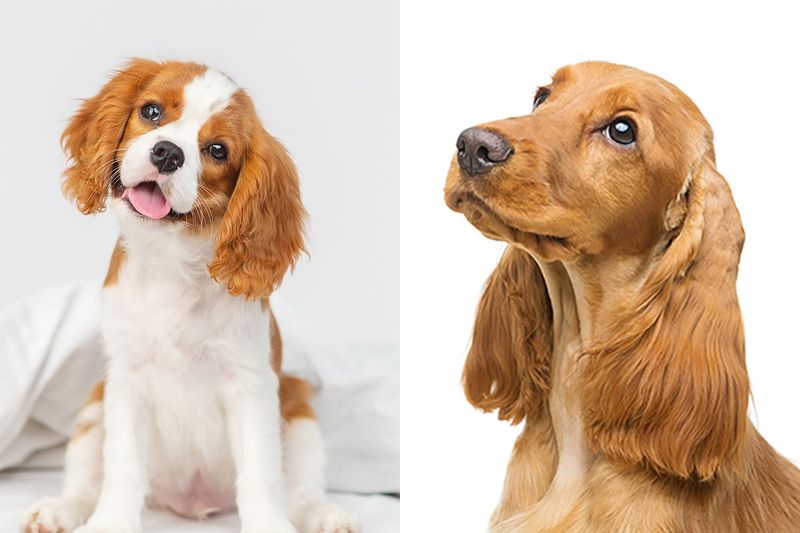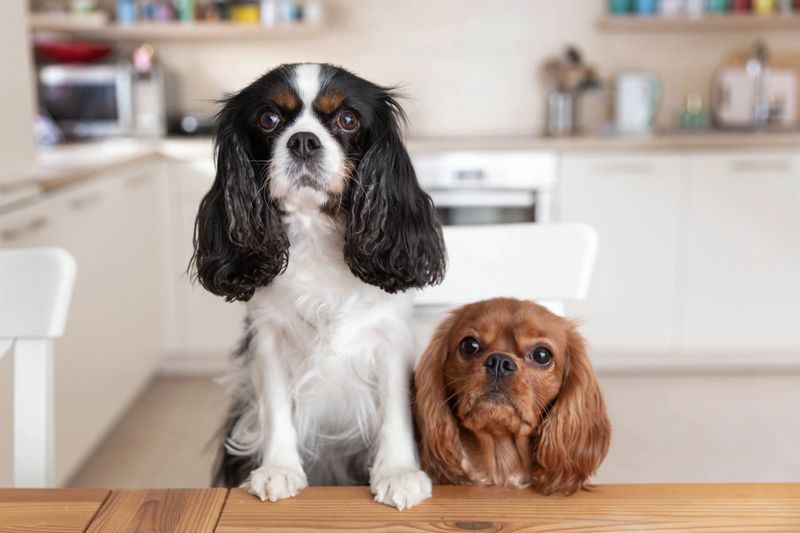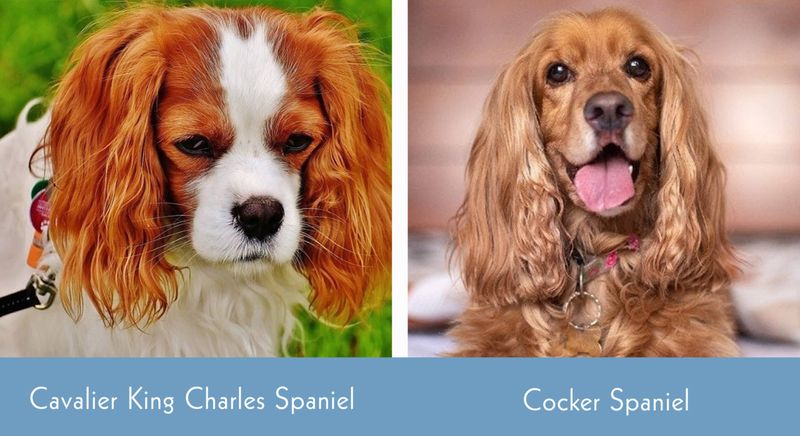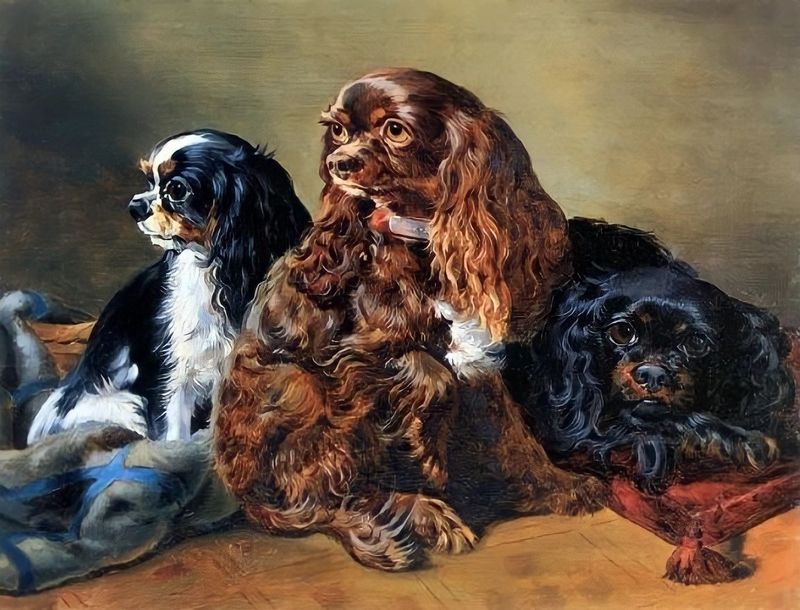Exploring the delightful world of canine companionship, Cocker Spaniels and Cavalier King Charles Spaniels offer distinct traits that appeal to different dog lovers. While they both bring joy to any home, understanding the key differences between them can help potential owners make an informed choice. From their size to their unique personalities and care requirements, these two breeds are as charming as they are different. Through this article, we will delve into ten significant differences to guide you in choosing the perfect furry friend.
Size and Build
The Cocker Spaniel, with its sturdy build and compact body, tends to be larger than the Cavalier King Charles Spaniel. Standing between 14 to 15 inches tall and weighing around 25 to 30 pounds, Cockers have a robust appearance. In contrast, Cavaliers are smaller, standing 12 to 13 inches and weighing 13 to 18 pounds, offering a more delicate and graceful form. Their size difference not only affects their physical presence but also influences their suitability for apartment living versus needing more outdoor space for exercise and play.
Grooming Needs
Both breeds boast luxurious coats, but their grooming needs differ significantly. Cocker Spaniels require regular grooming due to their dense, wavy fur prone to matting. Weekly brushing and occasional trims keep them looking their best. Cavalier King Charles Spaniels, though also needing regular care, have silkier coats that are less likely to tangle, often requiring less intensive grooming. For owners, understanding these grooming essentials ensures that their pets remain healthy and comfortable, enhancing their overall quality of life.
Exercise Requirements
Exercise is essential for both breeds, but the intensity and type vary. Cocker Spaniels are energetic dogs, needing ample exercise to channel their vitality. Daily walks, interactive play, and mental challenges keep them satisfied. Conversely, Cavalier King Charles Spaniels enjoy moderate exercise. A leisurely stroll or a relaxed play session suits them just fine. Recognizing these differences aids owners in crafting a suitable exercise regimen. Balancing their needs ensures a fit, happy, and well-adjusted canine companion.
Trainability
When it comes to trainability, both breeds are intelligent, yet they exhibit distinct learning styles. Cocker Spaniels, with their eager-to-please attitude, pick up commands quickly but may require consistency and patience to prevent stubbornness. Cavaliers, on the other hand, excel with positive reinforcement, responding well to gentle training techniques. Their sensitive nature makes them less inclined to harsh methods. Tailoring training approaches to their unique temperaments fosters a loving bond and enhances obedience in both breeds.
Socialization Needs
Social butterflies by nature, both breeds thrive on social interactions, yet their needs differ. Cocker Spaniels require more extensive socialization due to their dynamic energy levels, benefiting from frequent playdates and varied environments. Cavaliers, with their gentle disposition, appreciate calm and familiar settings, excelling in smaller social gatherings. Understanding these nuances helps owners provide enriching experiences, ensuring their dogs grow up to be well-rounded and confident. It’s about finding the right balance tailored to each breed.
Health Considerations
Both breeds are prone to specific health issues that require attention. Cocker Spaniels may face ear infections due to their floppy ears, while Cavaliers often contend with heart conditions like mitral valve disease. Regular veterinary check-ups are vital for early detection and management. Owners should be proactive in understanding potential genetic conditions, ensuring a healthy lifestyle with proper diet and exercise. These preventative measures can significantly enhance the well-being and longevity of their beloved pets.
Personality Traits
Cocker Spaniels are known for their lively, exuberant personalities, often described as cheerful and playful companions. They thrive on interaction and require plenty of mental stimulation. Cavalier King Charles Spaniels, however, embody a more serene temperament. They are affectionate and gentle, perfect for cuddling on the couch. While both breeds are friendly, Cockers might demand more playtime, whereas Cavaliers excel in providing calm companionship. Understanding these traits helps owners cater to their energy levels and bonding preferences.
Dietary Needs
Diet plays a crucial role in the health of both breeds, yet their requirements can vary. Cocker Spaniels, with their higher energy levels, may need a diet rich in proteins and nutrients to support their active lifestyle. Cavaliers, being smaller and less active, benefit from portion control to avoid obesity. Owners must tailor feeding plans to their dog’s age, weight, and activity level, ensuring a balanced diet that promotes vitality and well-being. Understanding these differences is key to nurturing a healthy, happy pet.
Living Environment Suitability
While both breeds adapt well to various living situations, their preferences may influence the choice. Cocker Spaniels thrive in homes with ample outdoor space to explore and play, catering to their energetic nature. In contrast, Cavaliers are well-suited for apartment living, enjoying the cozy indoor environment. However, both breeds need daily interaction and exercise to prevent boredom and promote mental well-being. Recognizing their living preferences can help owners create a harmonious home life that meets their dog’s needs.
Historical Background
Rich in history, both breeds have unique origins that add to their charm. Cocker Spaniels, originally bred for hunting in England, are known for their excellent retrieving skills. Cavaliers, named after King Charles II, were favored by nobility for their gentle nature and regal appearance. These historical roots provide insight into their characteristics and behaviors today. Understanding their lineage enriches the bond between owner and pet, offering a glimpse into the past that shaped these delightful companions.
